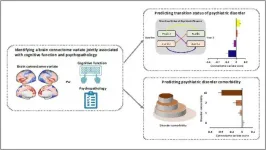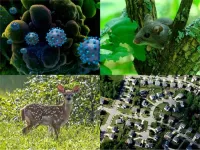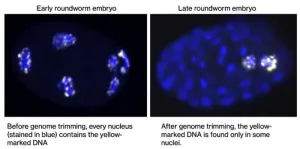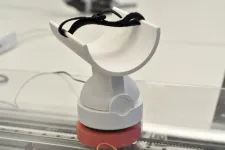(Press-News.org) UCLA researchers have described a previously unknown step in the complex process by which dietary cholesterol is processed in the intestines before being released into the bloodstream – potentially revealing a new pathway to target in cholesterol treatment.
Although an existing drug and statins impact part of the process, an experimental drug being studied in UCLA research labs appears to specifically target the newfound pathway, possibly adding a new approach to the cholesterol management toolbox.
“Our results show that certain proteins in the Aster family play a critical role in moving cholesterol through the absorption and uptake process,” said Dr. Peter Tontonoz, a UCLA professor and researcher in Pathology and Laboratory Medicine and Biological Chemistry, senior author of an article in Science. “The Aster pathway appears to be a potentially attractive target for limiting intestinal cholesterol absorption and reducing levels of plasma cholesterol.”
Cholesterol from food is absorbed by cells that line the inner surface of the intestines – enterocytes – where it is processed into droplets that eventually reach the bloodstream. But this journey involves a multistep process.
Free cholesterol is drawn into the cell’s plasma membrane – the external boundary of the cell – by a protein called NPC1L1. It then must move to another membranous network in the cell called the endoplasmic reticulum. This is where an enzyme called ACAT2 prepares the cholesterol for packaging and transport, in a process called esterification.
Scientists have not known how cholesterol finds its way into the endoplasmic reticulum to be acted upon by ACAT2. In this study, the researchers investigated the Aster protein family, which is known to bind cholesterol and help it move from one membrane to another.
“How cholesterol that enters the cell through NPC1L1 reaches the endoplasmic reticulum for esterification and regulation of cholesterol synthesis has been a longstanding mystery,” Tontonoz said. “We solve that mystery by showing that two members of the Aster protein family – Aster-B and -C – provide the link between NPC1L1 and ACAT2. By attaching to the plasma membrane, these proteins facilitate cholesterol transport to the endoplasmic reticulum.”
It was previously understood that NPC1L1 was a key player, but this study breaks the process into distinct steps. When NPC1L1 pulls cholesterol from the intestine into the enterocyte, it triggers the recruitment of the Aster proteins.
“We show that NPC1L1 and Asters play sequential, nonredundant roles in the delivery of dietary cholesterol from the intestinal lumen to the enterocyte ER (endoplasmic reticulum),” the authors write.
Additionally, the researchers found that the Aster proteins may provide a new treatment target for the control of cholesterol levels. When the actions of Aster-B and -C are blocked, cellular cholesterol stores are reduced, and the processing of cholesterol is impaired.
An existing drug, ezetimibe, targets NPC1L1, inhibits the activity of ACAT2, and reduces cholesterol absorption. It sometimes is used in combination with statins to reduce blood cholesterol. But ezetimibe doesn’t bind sufficiently to Asters to prevent all cholesterol transport. The research team, however, has identified an experimental drug – a small molecule called AI-3d – that potently inhibits Aster-A, -B, and -C. In a series of studies in both mice and human cells, the researchers found that the drug inhibits cholesterol absorption by directly targeting the effects of the Asters.
Funding This work was supported by the following: National Institutes of Health grant R01 DK126779 (to P.T.); National Institutes of Health grant P01 HL146358 (to S.G.Y.); Transatlantic Network of Excellence, Leducq Foundation, 19CDV04; American Diabetes Association Postdoctoral fellowship 1-19-PDF-043-RA and Ermenegildo Zegna Founder’s Scholarship 2017 (to A.F.); CDI Junior Faculty Career Development Award (CD-JFCD-07012019), CDI NIH K12 Junior Faculty Career Development Grant (CDI-K12-07012023), and Today’s and Tomorrow’s Children Fund Bridge Grant (CDI-TTCF-07012022) (to E.W.); UCSD-UCLA Diabetes Research Center (DK063491) (to E.W. and P.T.); American Heart Association Postdoctoral Fellowship 18POST34030388 to (X.X.); American Heart Association Postdoctoral Fellowship 903306 to (J.P.K.); the Damon Runyon Cancer Research Fellowship (DRG-2424-21) to (Y.G.); National Institutes of Health grant T32 DK007180 to (A.N.); and The National Collaborative Research Infrastructure Strategy (NCRIS), an Australian Government initiative, to the National Deuteration Facility in Australia.
Article Aster-dependent nonvesicular transport facilitates dietary cholesterol uptake.
More information, including a copy of the paper, can be found online at the Science press package at https://www.eurekalert.org/press/scipak/.
END
Researchers identify previously unknown step in cholesterol absorption in the gut
UCLA studies suggest newly described pathway could be a treatment target
2023-11-09
ELSE PRESS RELEASES FROM THIS DATE:
Desert birds lay larger eggs when they have more helpers
2023-11-09
Desert birds lay larger eggs when they have more helpers to feed their chicks, new research shows.
White-browed sparrow weavers live in family groups in which only a dominant pair breeds and their grown-up offspring, particularly females, help to feed nestlings.
The study, by researchers at the University of Exeter, found that mothers increased the size of their eggs when they had more female helpers on hand.
The number of male helpers did not affect egg size, probably because male helpers feed chicks at substantially lower rates than female helpers.
“We don’t yet fully understand why helped mothers are laying heavier ...
Ethical, environmental and political concerns about climate change affect reproductive choices
2023-11-09
People are beginning to reconsider their reproductive decisions due to complex concerns about climate change, with many choosing to forego childbearing, or reduce the number of children they have as a result, finds a new study by UCL researchers.
The research, published in PLOS Climate, is the first systematic review to explore how and why climate change-related concerns may be impacting reproductive decision-making.
The team examined 13 studies, involving 10,788 participants, which were conducted between 2012 and 2022, primarily in Global North countries ...
Photonics team develops high-performance ultrafast lasers that fit on a fingertip
2023-11-09
Lasers are essential tools for observing, detecting, and measuring things in the natural world that we can’t see with the naked eye. But the ability to perform these tasks is often restricted by the need to use expensive and large instruments.
In a newly published cover-story paper in the journal Science, researcher Qiushi Guo demonstrates a novel approach for creating high-performance ultrafast lasers on nanophotonic chips. His work centers on miniaturizing mode-lock lasers — a unique laser that emits a train of ultrashort, coherent light pulses in femtosecond intervals, which is an astonishing quadrillionth ...
Scientists flag conflicts of interest ahead of UN plastic and chemical talks
2023-11-09
An international group of 35 scientists is calling out conflicts of interest plaguing global plastic treaty negotiations and that have interfered with timely action on other health and environmental issues. They urge the implementation of strict guidelines to prevent the same problems from affecting the UN’s upcoming Science Policy Panel on chemicals. Their concerns and recommendations are outlined in a featured paper in the journal Environmental Science & Technology.
“From Big Tobacco to Big Oil, powerful industries use the same playbook to manufacture doubt and sow misinformation,” said co-author Bethanie ...
First-ever crowd-sourced small molecule discovery and a potent SARS-CoV-2 antiviral lead compound announced by COVID Moonshot Consortium
2023-11-09
The work of the COVID Moonshot Consortium is being published in the prestigious journal Science on 10 November, revealing their discovery of a potent SARS-CoV-2 antiviral lead compound. It also reflects on the success of its open science approach in launching a patent-free antiviral discovery program to rapidly develop a differentiated lead in response to a pandemic emergency. Open science discovery of potent noncovalent SARS-CoV-2 main protease inhibitors ) DOI 10.1126/science.abo7201.
The COVID Moonshot initiative ...
Cornell chemists image basic blocks of synthetic polymers
2023-11-09
ITHACA, N.Y. -- Synthetic polymers are everywhere in our society – from nylon and polyester clothing to Teflon cookware and epoxy glue. At the molecular level, these polymers’ molecules are made of long chains of monomer building blocks, the complexity of which increases functionality in many such materials.
In particular, copolymers, which consist of different types of monomers in the same chain, allow for fine-tuning of the material’s properties, said Peng Chen, the Peter J.W. Debye Professor of Chemistry in the College of Arts and Sciences (A&S). The monomer sequence plays a critical role in a material’s properties, but scientists until ...
Brain imaging identifies biomarkers of mental illness
2023-11-09
Philadelphia, November 9, 2023 – Research and treatment of psychiatric disorders are stymied by a lack of biomarkers – objective biological or physiological markers that can help diagnose, track, predict, and treat diseases. In a new study, researchers use a very large dataset to identify predictive brain imaging-based biomarkers of mental illness in adolescents. The work appears in Biological Psychiatry, published by Elsevier.
Traditionally, psychiatric disorders such as depression have been diagnosed based on symptoms according to subjective assessments. The identification of biomarkers to aid in diagnosis and treatment selection would greatly advance treatments.
In ...
Cary Institute partners on $3M USDA-funded study on COVID-19 variants that could emerge from wildlife
2023-11-09
Many wild animals can carry COVID-19, including those that live among us, such as deer mice, red foxes, white-tailed deer, and more. These species may act as reservoirs, offering new opportunities for the virus to mutate and spill back into people. The omicron variant, for example, is thought to have emerged from mice.
With $3 million in federal grant funding, a new five-year research project will bring together virology, disease ecology, and artificial intelligence to better understand how SARS-CoV-2 (the virus that causes COVID-19) behaves ...
The enigma of embryonic development: How certain animals trim their genomes
2023-11-09
New research is underway to decipher a fascinating biological puzzle—how some animals can naturally discard more than half of their genetic information during embryonic development.
This radical natural phenomenon has captivated scientists for over 130 years, presenting a tantalizing question in the field of developmental biology and genetics.
Equipped with the latest in genetic engineering tools, the team at The University of Warwick is working to dissect the mechanisms behind this selective genomic editing. By uncovering the processes that allow some nematode worms to abandon up to ...
New URI lab developing adaptive technology, secures National Science Foundation grant
2023-11-09
New URI lab developing adaptive technology, secures National Science Foundation grant
Reza Abiri and Yalda Shahriari receive National Science Foundation award totaling $460,000 for work to improve stroke patient rehabilitation
Passing by Reza Abiri’s office at the University of Rhode Island, one might suspect him of nursing a serious coffee habit. A colorful collection of various mugs and cups dot his office, and though he is friendly enough to likely welcome any visitors stopping by to chat, the cups serve a larger purpose.
Abiri and Yalda Shahriari, professors in ...
LAST 30 PRESS RELEASES:
Heart-brain connection: international study reveals the role of the vagus nerve in keeping the heart young
Researchers identify Rb1 as a predictive biomarker for a new therapeutic strategy in some breast cancers
Survey reveals ethical gaps slowing AI adoption in pediatric surgery
Stimulant ADHD medications work differently than thought
AI overestimates how smart people are, according to HSE economists
HSE researchers create genome-wide map of quadruplexes
Scientists boost cell "powerhouses" to burn more calories
Automatic label checking: The missing step in making reliable medical AI
Low daily alcohol intake linked to 50% heightened mouth cancer risk in India
American Meteorological Society announces Rick Spinrad as 2026 President-Elect
Biomass-based carbon capture spotlighted in newly released global climate webinar recording
Illuminating invisible nano pollutants: advanced bioimaging tracks the full journey of emerging nanoscale contaminants in living systems
How does age affect recovery from spinal cord injury?
Novel AI tool offers prognosis for patients with head and neck cancer
Fathers’ microplastic exposure tied to their children’s metabolic problems
Research validates laboratory model for studying high-grade serous ovarian cancer
SIR 2026 delivers transformative breakthroughs in minimally invasive medicine to improve patient care
Stem Cell Reports most downloaded papers of 2025 highlight the breadth and impact of stem cell research
Oxford-led study estimates NHS spends around 3% of its primary and secondary care budget on the health impacts of heat and cold in England
A researcher’s long quest leads to a smart composite breakthrough
Urban wild bees act as “microbial sensors” of city health.
New study finds where you live affects recovery after a hip fracture
Forecasting the impact of fully automated vehicle adoption on US road traffic injuries
Alcohol-related hospitalizations from 2016 to 2022
Semaglutide and hospitalizations in patients with obesity and established cardiovascular disease
Researchers ‘listen in’ to embryo-mother interactions during implantation using a culture system replicating the womb lining
How changing your diet could help save the world
How to make AI truly scalable and reliable for real-time traffic assignment?
Beyond fragmented markets: A new framework for efficient and stable ride-pooling
Can shape priors make road perception more reliable for autonomous driving?
[Press-News.org] Researchers identify previously unknown step in cholesterol absorption in the gutUCLA studies suggest newly described pathway could be a treatment target






